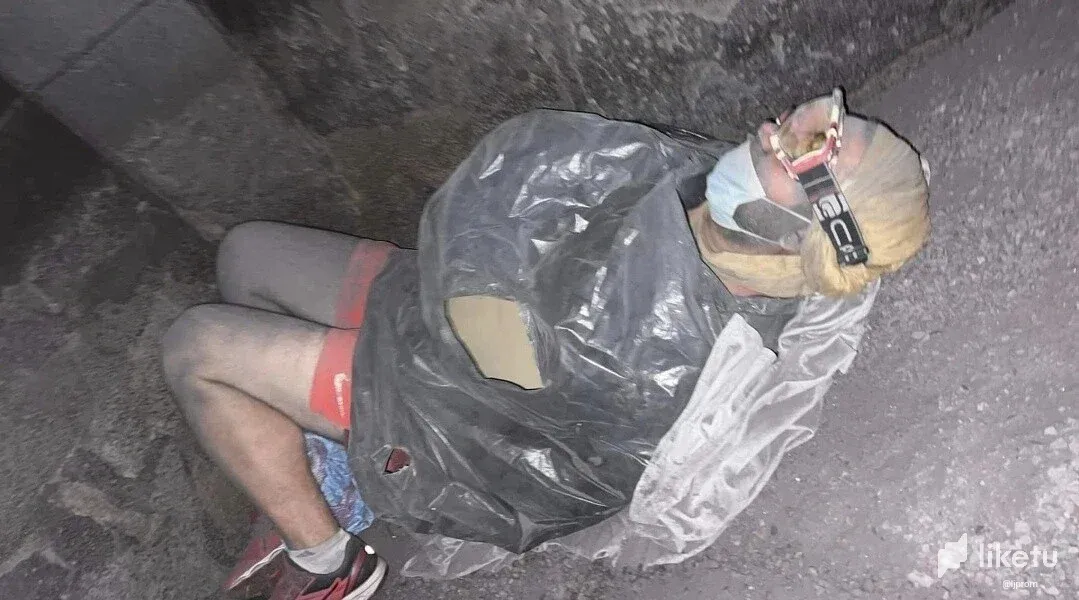
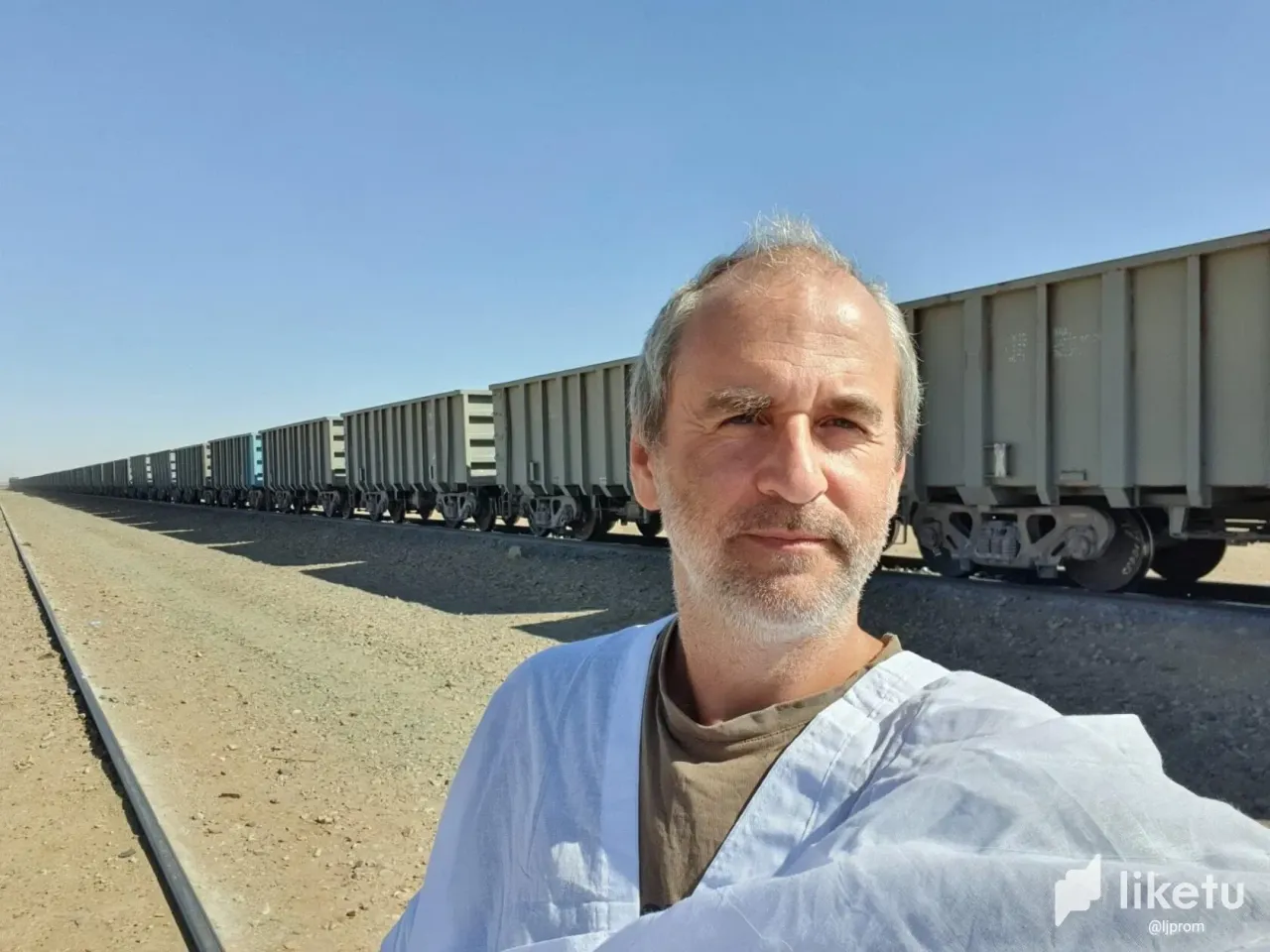
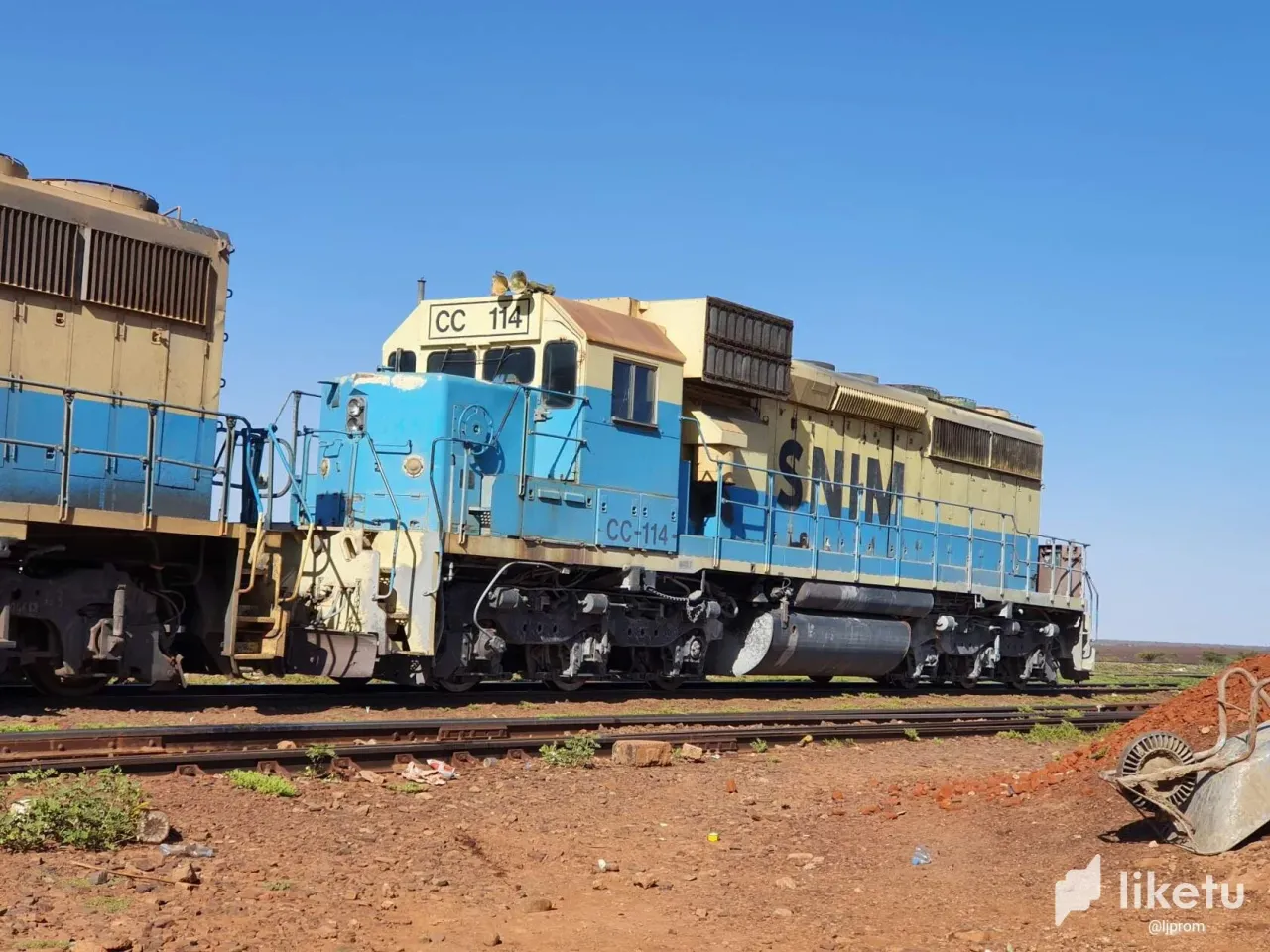
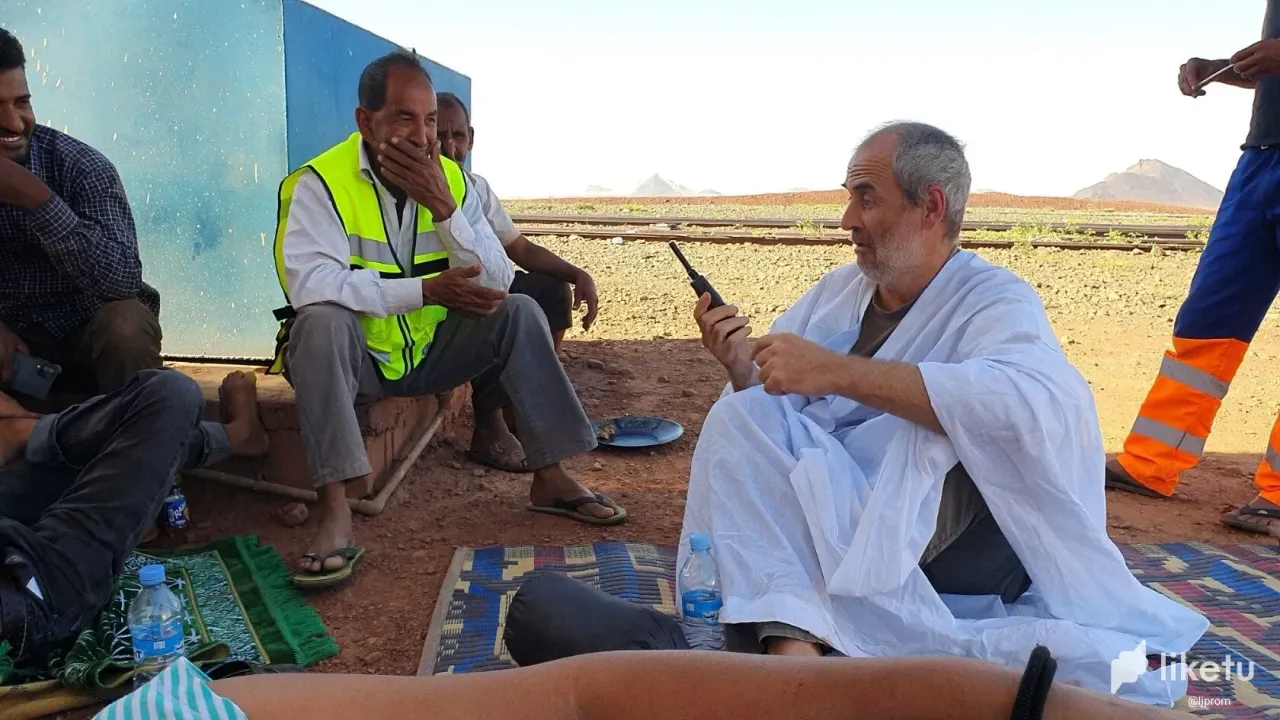
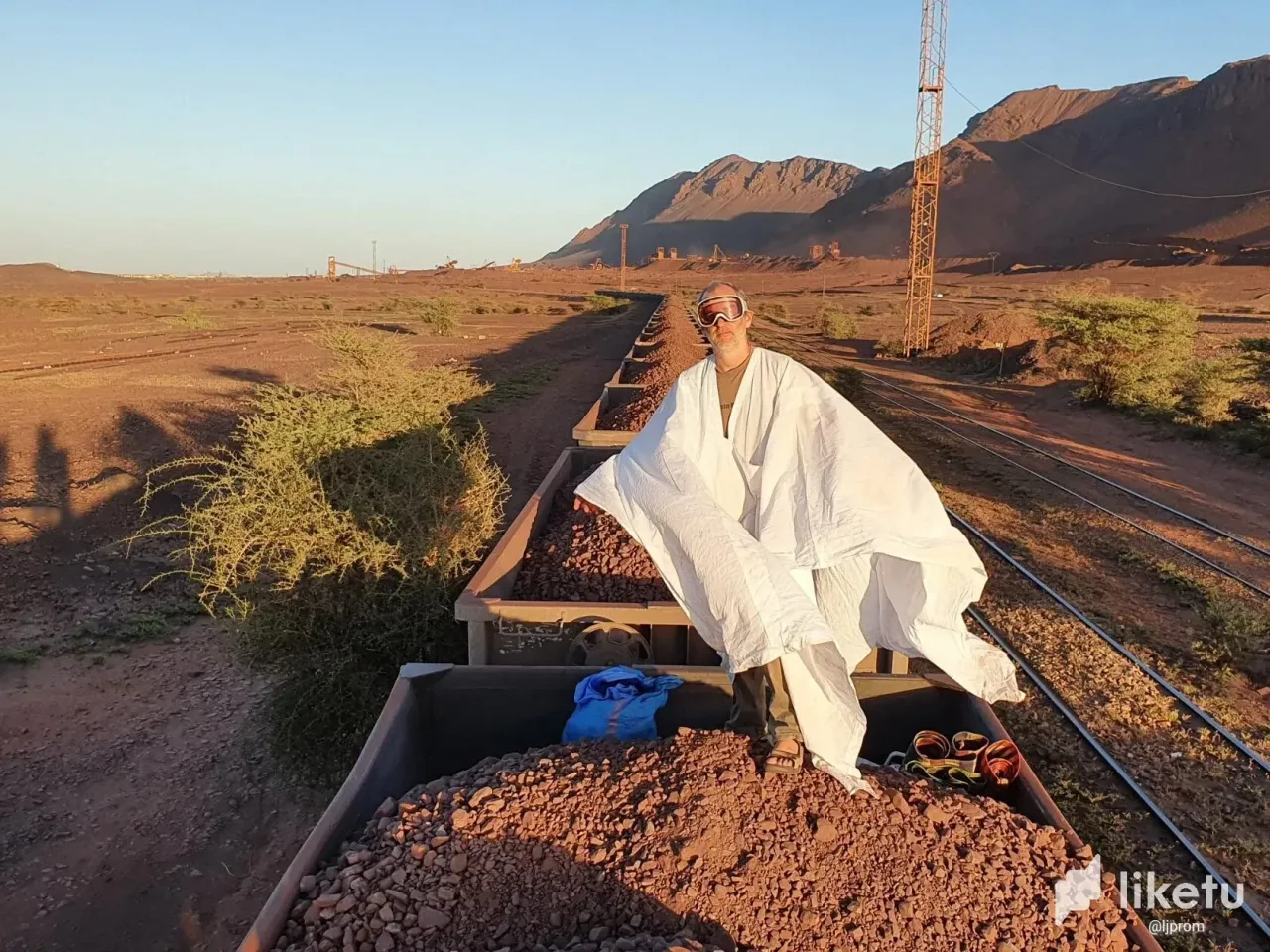
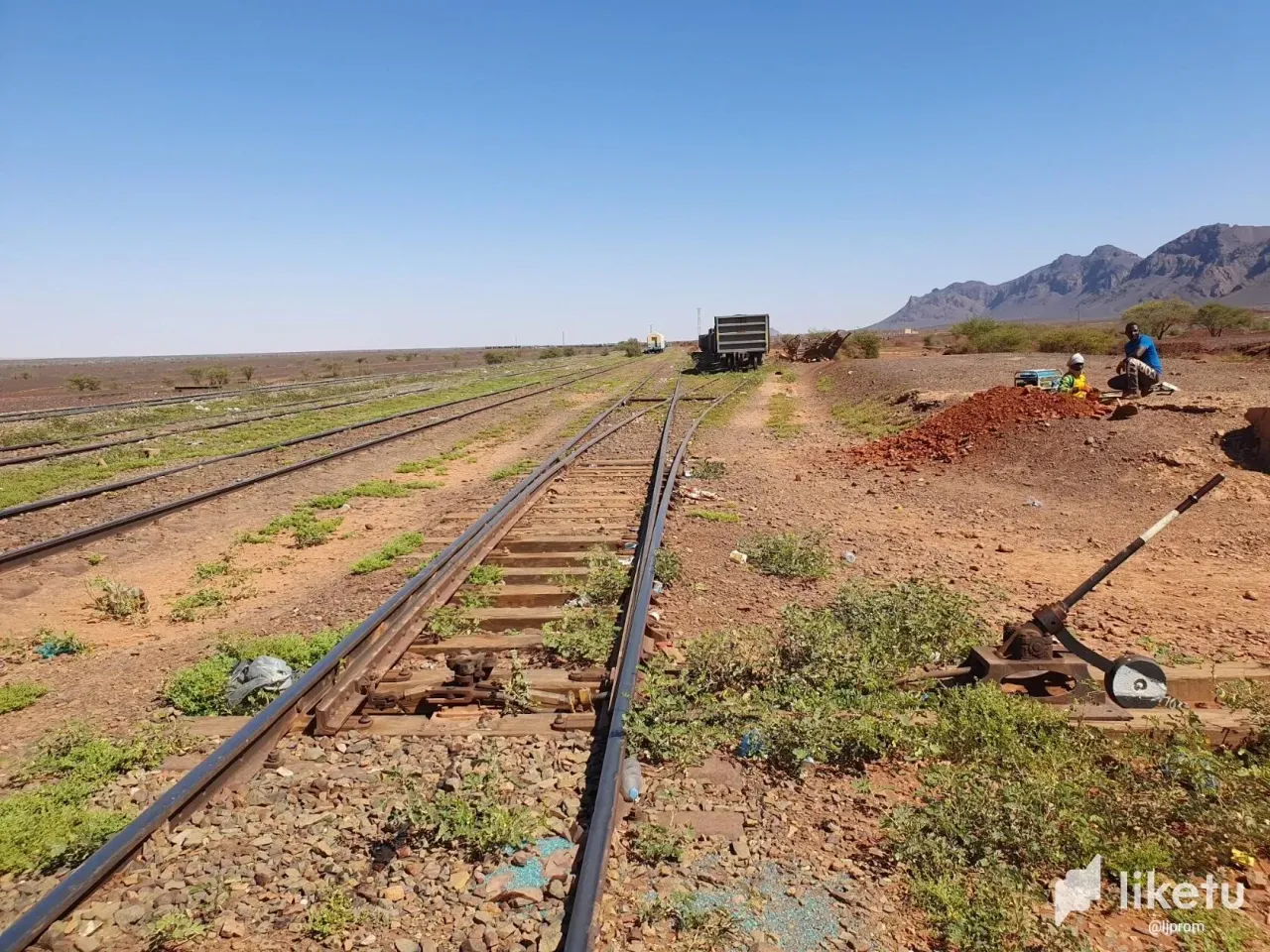
Whatever you call it, this train from Zouerate to Nouadhibou is unmistakable, there are no others in Mauritania. It was I who rode it in a white coat (which, reluctantly, nevertheless threw it away), someone was less fortunate. This is what the client of my guide's brother, also a guide, looked like, who rode the night train a couple of days before me.
The man was told: you will ride all night, take a sleeping bag. He replied: "I am from a northern country, and in your desert it does not get cold even at night." When the man realized that he was wrong, only plastic garbage bags were found from the warm hand.
I showed almost all my photos from the train, but there is some practical information left, interesting only for those who are going to ride themselves. All according to the guide, all figures are approximate.
Three empty trains leave Nouadhibou for Zouerate every day. They do not make intermediate stops and do not take passengers. These three trains loaded with ore return from Zouerate to Nouadhibou. Only to one of them, a passenger car is hooked to the end of the train. Only this train makes intermediate stops in Shum (sometimes in Ben-Amera and somewhere else) and takes passengers. It is difficult to determine visually whether there is a passenger car at the end of the train, because the length of the train can reach 2.5 km.
Traveling in a passenger car costs money. Travel in a wagon with ore is free. This is absolutely normal transport for local residents. Our guide has used it over 500 times.
Usually travelers travel by train either from Zouerate to Noise (about 5 hours) or from Noise to Nouadhibou (17 hours). Some go the full route (22 hours). We chose a short segment because I have already been to Nouadhibou, and you can feel all the romance in 5 hours.
Nobody knows the train departure time. I spent half a day at the station in Zuerat, talking with the head of the station (a cheerful uncle, prosperous by local standards, salary 1400 euros), but he did not know the departure time either. From time to time he gave me a walkie-talkie, I asked in school French "Where is the train?", but on the other side they did not know the time of departure.
In fact, the station where you can board a freight car is not in Zouerate, but in the neighboring village of Fdérick. Wagons are loaded with ore at one of the three mines, which are located 20, 50 and 70 km from Zuerat. Actually, my life hack was simple. When it became clear that the train from Zuerat would leave only after sunset (although it should have been at 1 pm), I suggested that the guide find out where the train was being loaded and formed, and rush by car there in order to have time to take pictures in the light of day. So we did. Locomotives (there are several by the train) were hitched with the last rays of the sun. And we went, sitting on the ore and singing "Let them run clumsily" already in the dark. I filmed a video, but it turned out so-so.
It is better to sit down approximately in the fifth car of the head of the train, so that there is less dust from the cars in front, and the proximity of the locomotives does not bother. For a night trip, a sleeping bag is useful, for a short trip, a rug is enough.
There are two types of ore in wagons: stone and powder. We were lucky to sit on the rocks. If there was a powder, I would look like the hero in the first photo and then pick the dust out of my ears for another four days. For wagons with powder, diving goggles are necessary, you can ride on stones without them.
Feelings are pleasant. On the list of "try once in a lifetime" the Mauritanian train takes a well-deserved place.